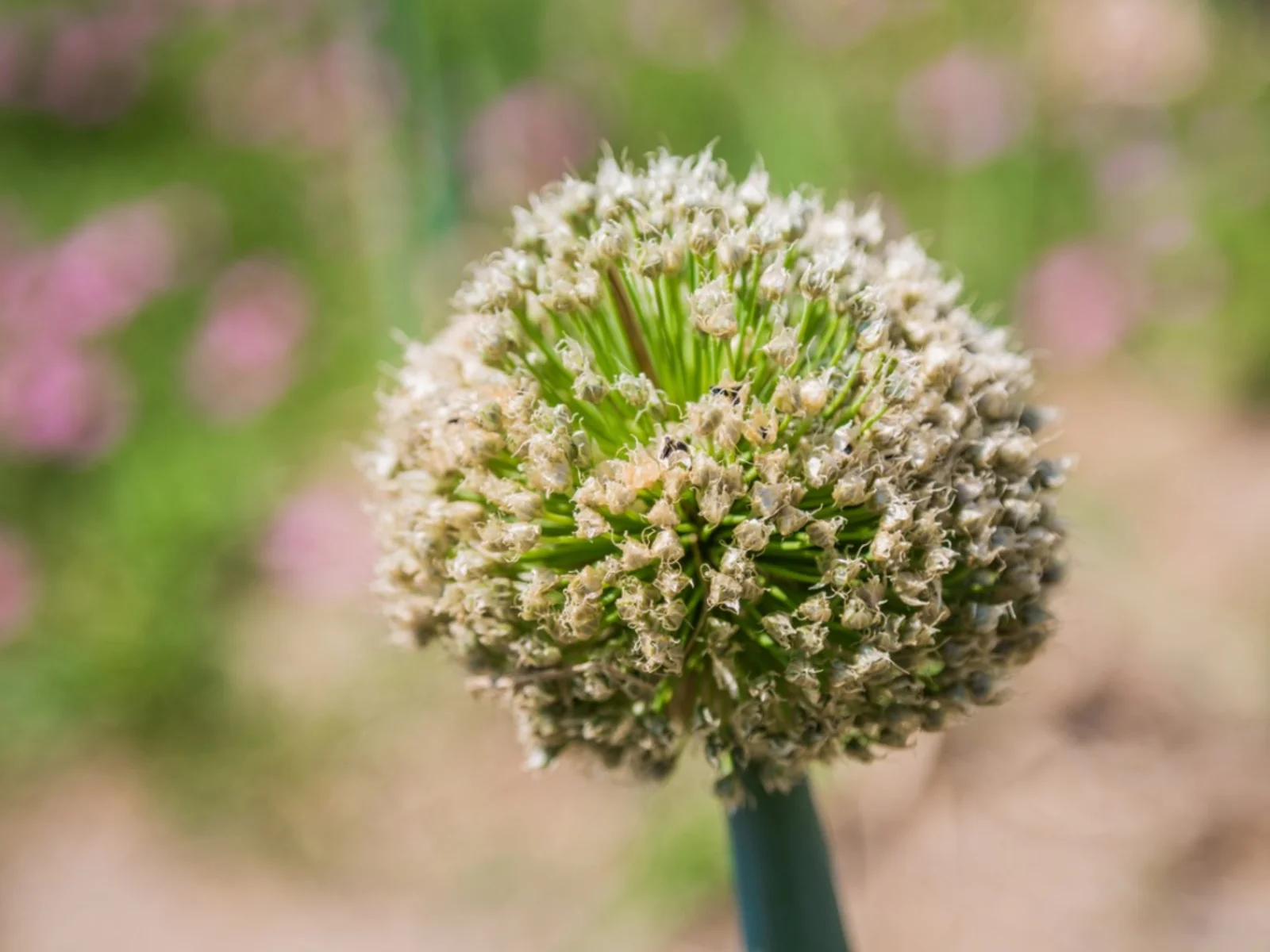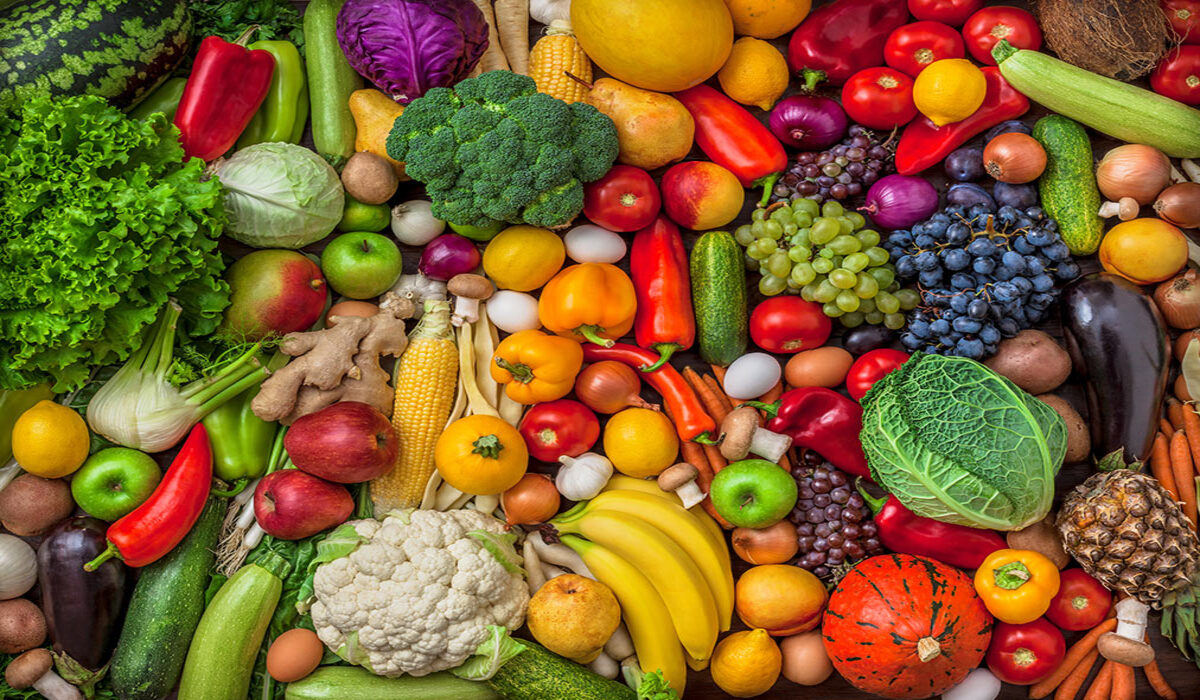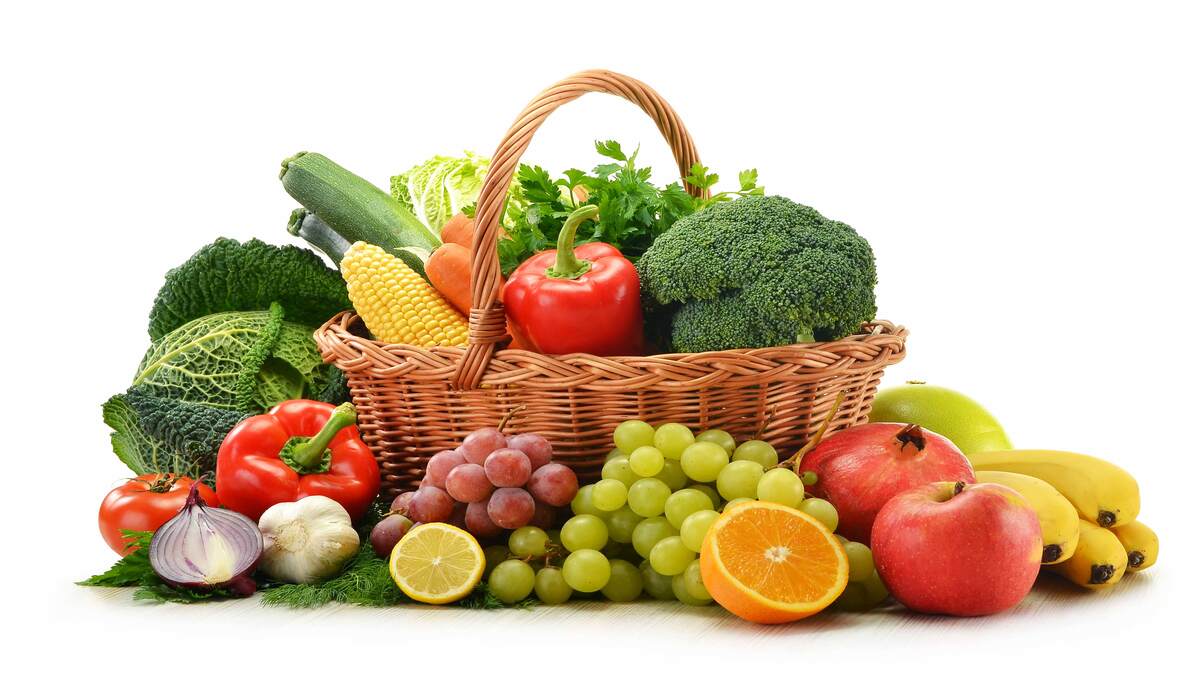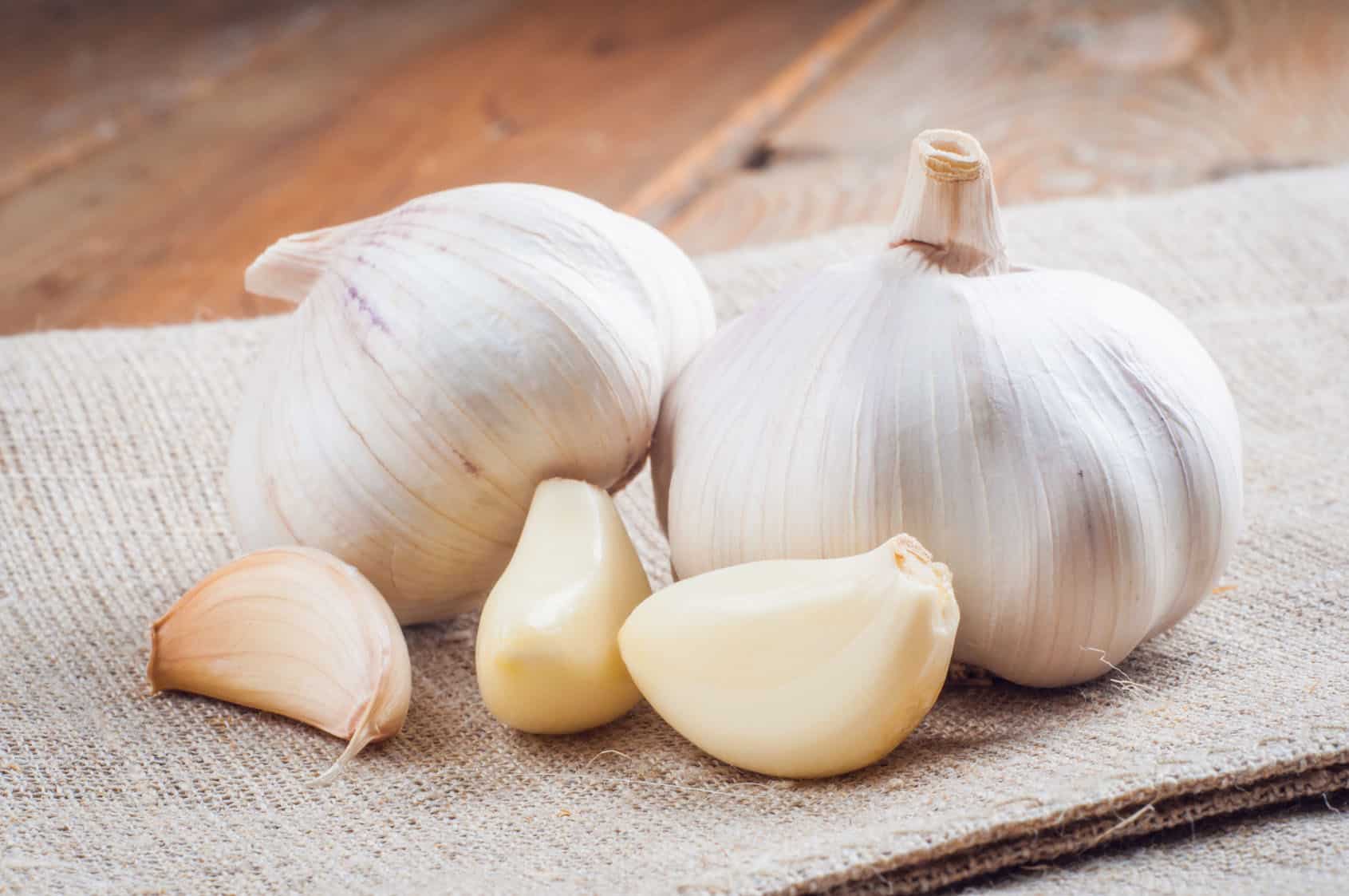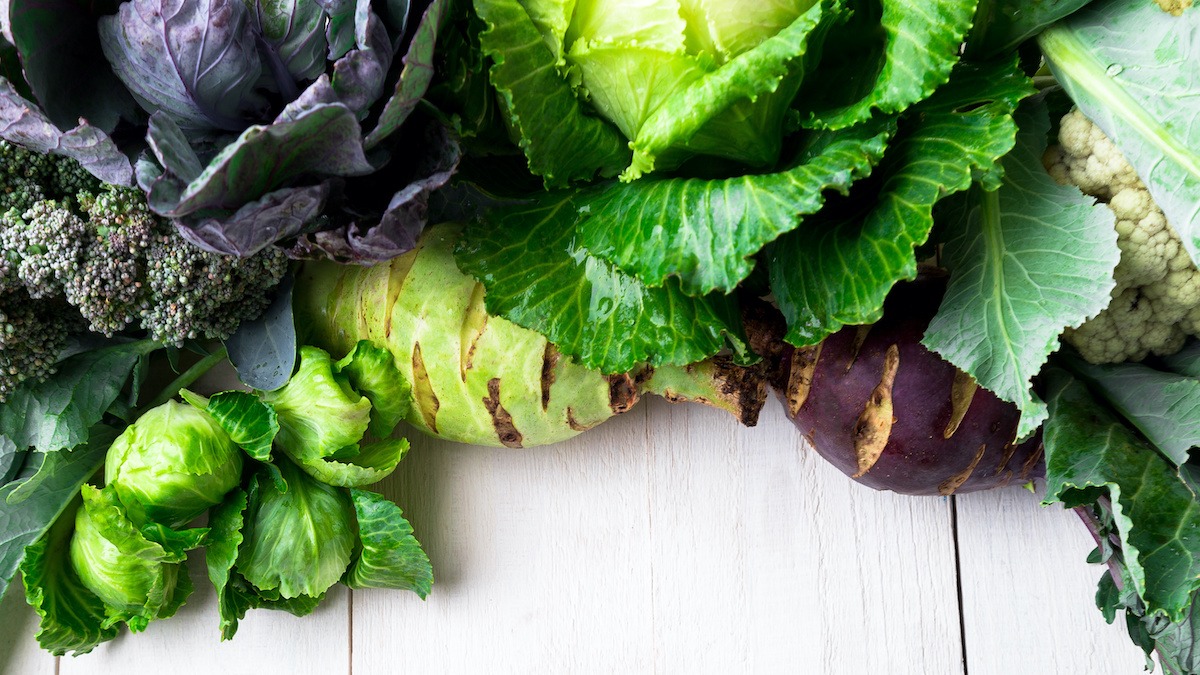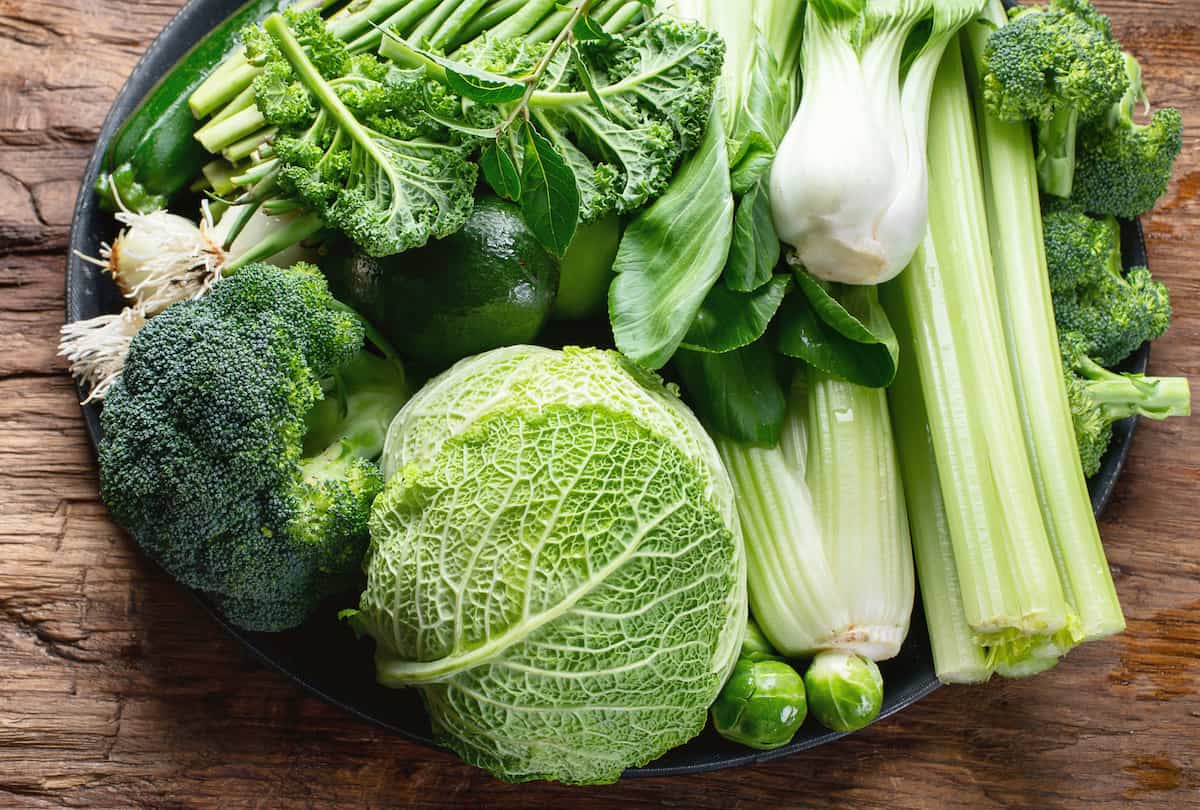Home>Types of Gardening>Edible Gardening>What Are Leafy Green Vegetables
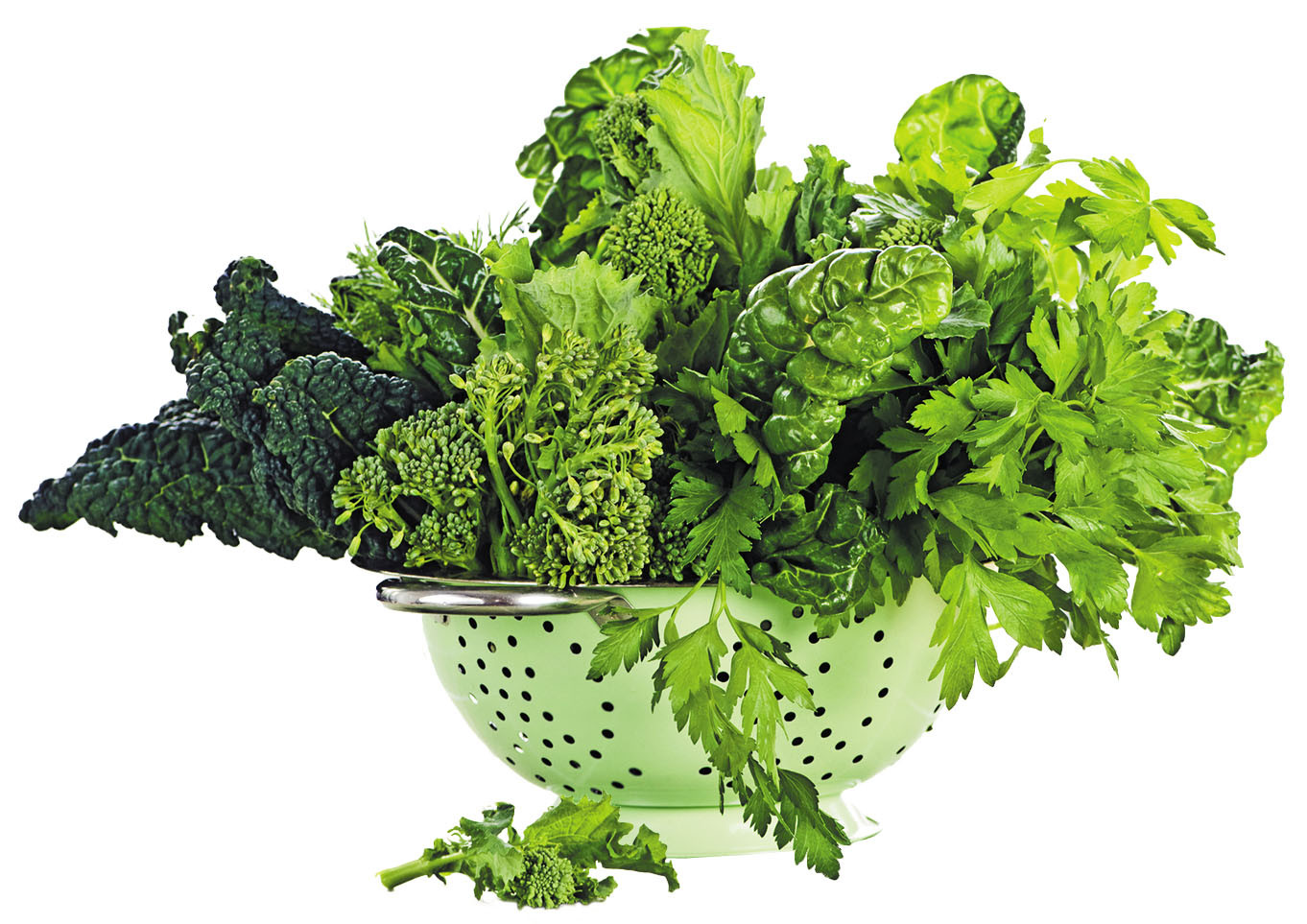

Edible Gardening
What Are Leafy Green Vegetables
Modified: January 22, 2024
Learn about the various types of leafy green vegetables to grow in your edible garden. From kale to spinach, discover how to cultivate nutritious greens at home.
(Many of the links in this article redirect to a specific reviewed product. Your purchase of these products through affiliate links helps to generate commission for Chicagolandgardening.com, at no extra cost. Learn more)
Table of Contents
- Introduction
- Benefits of Leafy Green Vegetables
- Nutritional Profile of Leafy Green Vegetables
- Popular Types of Leafy Green Vegetables
- How to Incorporate Leafy Green Vegetables into Your Diet
- Tips for Buying and Storing Leafy Green Vegetables
- Precautions and Considerations for Leafy Green Vegetables
- Conclusion
Introduction
Welcome to the wonderful world of edible gardening! If you have a green thumb and a love for fresh, nutritious produce, then you’re in for a treat. Edible gardening is not only a rewarding and enjoyable hobby, but it also allows you to have control over what you eat and ensures that you’re consuming the freshest and healthiest ingredients.
One of the most popular and versatile crops in edible gardening is leafy green vegetables. These vibrant and nutritious plants are packed with vitamins, minerals, and antioxidants, making them an excellent addition to any diet. Whether you’re a seasoned gardener or just starting out, cultivating leafy greens in your garden or even in containers on your balcony or windowsill is a simple and fulfilling way to boost your nutrition.
Leafy green vegetables come in a variety of shapes, sizes, and flavors. From crispy romaine lettuce to spicy arugula, there’s something to suit every palate. Not only do they add a burst of color to your plate, but they also provide numerous health benefits. Incorporating leafy green vegetables into your diet can strengthen your immune system, support heart health, improve digestion, and even help with weight management.
In this comprehensive article, we will explore the benefits of leafy green vegetables, delve into their nutritional profile, discuss popular types of leafy greens, and provide tips on how to incorporate them into your diet. We will also cover important considerations for buying and storing leafy green vegetables, as well as precautions to keep in mind.
So, whether you’re a beginner gardener looking to start your own edible garden or a health-conscious individual seeking to add more leafy greens to your meals, this article is here to guide you every step of the way. Let’s dive in and discover the wonderful world of leafy green vegetables and how they can transform your edible gardening experience.
Benefits of Leafy Green Vegetables
Leafy green vegetables are nutritional powerhouses that offer a wide range of health benefits. Incorporating these vibrant greens into your diet can have a positive impact on your overall well-being. Here are some of the key benefits of consuming leafy green vegetables:
- Rich in nutrients: Leafy greens are packed with essential vitamins and minerals. They are particularly high in vitamin K, which plays a crucial role in blood clotting and bone health. They are also excellent sources of vitamin A, vitamin C, iron, and calcium, among others.
- Support digestive health: Leafy green vegetables are high in fiber, which aids in digestion and promotes regular bowel movements. The fiber content also helps to maintain a healthy gut microbiome and prevent constipation.
- Boost immune system: Leafy greens are rich in antioxidants, such as vitamin C and beta-carotene. These antioxidants help to protect the body against free radicals, strengthen the immune system, and reduce the risk of chronic diseases.
- Promote heart health: The high levels of potassium, magnesium, and fiber found in leafy greens can help lower blood pressure and reduce the risk of heart disease. Additionally, the presence of folate in leafy greens supports cardiovascular health and aids in red blood cell production.
- Aid in weight management: Leafy green vegetables are low in calories and high in fiber, making them a great addition to a weight loss or weight management plan. The high fiber content helps you feel fuller for longer, reducing the chances of overeating.
- Improve brain function: Leafy greens contain nutrients, such as folate and vitamin K, that are essential for brain health. These nutrients support cognitive function, improve memory, and may even reduce the risk of neurodegenerative diseases like Alzheimer’s.
- Enhance skin health: The combination of vitamins A, C, and E, along with other antioxidants found in leafy greens, helps promote healthy skin. These nutrients protect against skin damage caused by free radicals and contribute to a radiant complexion.
- Support eye health: Leafy greens, especially those rich in carotenoids like lutein and zeaxanthin, are beneficial for maintaining good eye health. These compounds protect the eyes from harmful UV damage and reduce the risk of age-related macular degeneration and cataracts.
With their impressive array of health benefits, leafy green vegetables are a true nutritional powerhouse. Incorporating these greens into your daily diet can contribute to improved overall health and well-being.
Nutritional Profile of Leafy Green Vegetables
Leafy green vegetables are not only delicious and versatile, but they are also incredibly nutrient-dense. Let’s take a closer look at the nutritional profile of these vibrant greens:
Vitamins: Leafy green vegetables are rich in various vitamins. They are particularly high in vitamin K, which is essential for blood clotting and bone health. Additionally, they are excellent sources of vitamin A, vitamin C, vitamin E, and several B vitamins, including folate.
Minerals: Leafy greens are packed with minerals that are vital for maintaining overall health. They are good sources of calcium, magnesium, iron, and potassium. Calcium is crucial for the development and maintenance of strong bones, while magnesium plays a role in energy production and muscle function. Iron is necessary for red blood cell production, and potassium aids in maintaining proper heart and muscle function.
Antioxidants: Leafy green vegetables are loaded with powerful antioxidants, which help protect the body from oxidative stress caused by free radicals. Antioxidants, such as vitamin C, vitamin E, and beta-carotene, have been linked to a reduced risk of chronic diseases, including heart disease and certain types of cancer.
Fiber: Leafy greens are high in dietary fiber, which is essential for a healthy digestive system. Fiber adds bulk to the diet, promotes regular bowel movements, and helps to maintain optimal gut health. It also aids in controlling blood sugar levels and can contribute to weight management by increasing feelings of fullness.
Phytochemicals: Leafy green vegetables contain various phytochemicals, which are natural compounds that have been shown to have numerous health benefits. For example, lutein and zeaxanthin are carotenoids found in leafy greens that are associated with improved eye health and reduced risk of age-related macular degeneration.
Low in Calories: Leafy greens are incredibly low in calories, making them an ideal choice for those looking to maintain or lose weight. They provide a high volume of food with relatively low energy content, allowing you to fill up on these nutrient-dense vegetables without consuming excess calories.
Incorporating a variety of leafy green vegetables into your diet can help ensure that you’re getting a wide range of essential vitamins, minerals, antioxidants, and other beneficial compounds. So, don’t hesitate to load up your plate with these nutritious greens for a boost in overall health and vitality.
Popular Types of Leafy Green Vegetables
When it comes to leafy green vegetables, there is a diverse array of options to choose from, each with its own unique flavor and texture. Here are some popular types of leafy greens that you can consider incorporating into your diet:
- Spinach: Spinach is a versatile leafy green that can be enjoyed raw in salads or cooked in various dishes. It is rich in vitamins A, C, and K, as well as iron and folate. Spinach has a pleasantly mild flavor and tender leaves.
- Kale: Known for its robust flavor and sturdy texture, kale is a nutrient powerhouse. It is packed with vitamins A, C, and K, as well as calcium and fiber. Kale can be enjoyed in salads, sautéed as a side dish, or used in smoothies and soups.
- Swiss Chard: Swiss chard has vibrant, colorful stems and dark green leaves. It is a great source of vitamins A, C, and K, as well as magnesium and potassium. Swiss chard can be cooked like spinach or used raw in salads.
- Romaine Lettuce: Romaine lettuce has crisp leaves and a slightly sweet flavor. It is rich in vitamins A, C, and K. Romaine lettuce is commonly used as the base for salads, but it can also be grilled or used as a wrap for sandwiches and burgers.
- Arugula: Arugula, also known as rocket, has a distinct peppery flavor. It is a good source of vitamins A, C, and K, as well as folate and calcium. Arugula is often used in salads or added to sandwiches and pizzas for a touch of spiciness.
- Collard Greens: Collard greens have large, sturdy leaves and a slightly bitter taste. They are rich in vitamins A, C, and K, as well as calcium and fiber. Collard greens are typically cooked and enjoyed as a side dish or added to soups and stews.
- Watercress: Watercress has a peppery yet refreshing flavor. It is an excellent source of vitamins A, C, and K, as well as calcium and iron. Watercress is often used in salads or added to sandwiches and soups for a vibrant kick.
These are just a few examples of the many leafy green vegetables available to incorporate into your meals. Experimenting with different types of leafy greens can add variety to your diet and provide a range of flavors and textures to enjoy.
Remember to wash leafy greens thoroughly before consuming them, and try to opt for organic or locally grown options when possible to ensure you’re getting the freshest and highest quality produce.
How to Incorporate Leafy Green Vegetables into Your Diet
Incorporating leafy green vegetables into your diet is a delicious and nutritious way to boost your overall health. Here are some tips on how to incorporate these vibrant greens into your meals:
- Salads: One of the simplest and most popular ways to enjoy leafy greens is in salads. Create a variety of salads using different greens like spinach, kale, or arugula. Add in your favorite vegetables, fruits, nuts, and seeds, and top it off with a flavorful dressing.
- Smoothies: Sneak leafy greens into your morning smoothies for an added nutritional boost. Spinach or kale blend well with fruits like bananas, berries, and pineapples. The sweetness of the fruits helps mask the flavor of the greens.
- Sautéed or Stir-Fried: Heat up a pan with some olive oil or garlic-infused oil, and quickly sauté your leafy greens. Add them to stir-fries, pasta dishes, or simply enjoy them as a side dish with some seasoning and a squeeze of lemon juice.
- Green Smoothie Bowls: Create a thick and creamy smoothie bowl by blending leafy greens with your choice of liquid (such as almond milk or coconut water) and frozen fruits. Top it with a variety of nutritious toppings like nuts, seeds, granola, and fresh fruits.
- Soups and Stews: Add chopped or shredded leafy greens to soups and stews during the last few minutes of cooking. They will wilt and add a burst of color, flavor, and nutrients to your meal.
- Wraps and Sandwiches: Use large leafy greens like romaine lettuce or Swiss chard as a healthier alternative to bread when making wraps and sandwiches. They provide a refreshing crunch and act as a nutrient-packed wrap for your favorite fillings.
- Stuffed Vegetables: Stuff vegetables like bell peppers, zucchini, or tomatoes with a mixture of leafy greens, grains, and protein sources like beans or quinoa. Bake them in the oven for a flavorful and nutrient-dense meal.
- Garnishes: Sprinkle chopped leafy greens on top of your favorite dishes as a garnish. Whether it’s a bowl of soup, a plate of pasta, or a homemade pizza, the added greens will bring a vibrant touch and added nutrition.
Remember to wash your leafy greens thoroughly before using them and remove any tough stems or damaged leaves. Buying local and organic leafy greens whenever possible ensures that you’re getting the freshest and most nutritious produce.
By incorporating leafy green vegetables into your meals creatively and regularly, you can enjoy their numerous health benefits and add excitement to your daily diet.
Tips for Buying and Storing Leafy Green Vegetables
When it comes to leafy green vegetables, freshness is key to ensure you’re getting the best flavor and nutritional value. Here are some tips for buying and storing leafy greens:
- Choose fresh-looking greens: Look for leafy greens with vibrant colors, crisp leaves, and no signs of wilting or damage. Avoid greens with yellowing or brown spots as they indicate age or deterioration.
- Opt for organic or locally grown: Consider buying organic leafy greens to minimize exposure to pesticides and ensure a higher quality product. Alternatively, visit local farmers’ markets or join a community-supported agriculture (CSA) program to get freshly harvested greens.
- Check the harvest date: Some packaged leafy greens include a harvest date. Choose greens that have been recently harvested to ensure maximum freshness and nutrient content.
- Store properly: After purchase, remove any damaged or wilted leaves and store the greens unwashed in a perforated plastic bag or produce drawer in the refrigerator. The perforations allow for airflow, preventing moisture buildup and prolonging freshness.
- Wash before use: When you’re ready to use the greens, wash them thoroughly under cool running water to remove any dirt or debris. Pat them dry with a clean towel or use a salad spinner to remove excess moisture before incorporating them into your dishes.
- Store cut greens separately: If you’ve already washed and prepped your greens, store them in an airtight container or a resealable bag lined with a paper towel. This helps absorb excess moisture and keeps the greens fresh for longer.
- Use within a few days: Leafy greens are best consumed within a few days of purchase to enjoy optimal freshness and flavor. However, heartier greens like kale or collard greens can last up to a week when stored properly.
- Consider freezing: If you find yourself with an abundance of leafy greens, consider blanching and freezing them for later use. Blanching helps preserve the color, flavor, and nutrients. After blanching, shock them in ice water, pat them dry, and store them in freezer-safe bags or containers.
- Grow your own: One surefire way to enjoy the freshest leafy greens is by growing them in your own garden or container. This way, you have control over the growing conditions and can harvest them as needed.
By following these tips, you can ensure the quality and longevity of your leafy greens, allowing you to enjoy them at their peak freshness and reap their nutritional benefits.
Precautions and Considerations for Leafy Green Vegetables
While leafy green vegetables offer a multitude of health benefits, it’s important to be aware of certain precautions and considerations when consuming and handling them. Here are some important points to keep in mind:
- Food Safety: Leafy greens can be a potential source of foodborne illnesses if not handled and prepared properly. Always wash your leafy greens thoroughly before consuming them to remove any dirt, bacteria, or pesticides that may be present.
- Common Allergens: Some individuals may have allergies to certain types of leafy greens. If you experience any adverse reactions, such as swelling, itching, or difficulty breathing after consuming a particular green, consult with a healthcare professional to determine if you have a specific allergen.
- Interactions with Medications: Leafy greens, particularly those high in vitamin K, can interact with certain medications, such as blood thinners. If you are taking any medications, consult with your healthcare provider to determine if there are any dietary restrictions or modifications that you need to be aware of.
- Oxalates: Some leafy greens, such as spinach and Swiss chard, contain high levels of oxalates. Oxalates can contribute to the formation of kidney stones in susceptible individuals. If you have a history of kidney stones or are at risk, it’s important to moderate your intake of these greens and consult with a healthcare professional for personalized advice.
- Preparation and Cooking: It is advisable to cook leafy greens to reduce the risk of microbial contamination further. When sautéing or stir-frying, make sure to cook the greens thoroughly until they are wilted to kill any potential bacteria. Proper cooking also helps break down the tough fibers, making nutrients more accessible to your body.
- Varied Diet: While leafy greens are highly nutritious, it’s important to maintain a balanced and varied diet by incorporating other fruits, vegetables, whole grains, lean proteins, and healthy fats. This ensures that you receive a wide range of nutrients and avoid overexposure to any specific compounds or potentially detrimental effects of an excessive intake of a single category of foods.
- Sourcing Organic and Local: Choosing organic and locally grown leafy greens whenever possible can reduce exposure to pesticides and support sustainable farming practices. Local greens are typically fresher and have a smaller carbon footprint, benefiting both your health and the environment.
- Storage Duration: Leafy greens have a limited lifespan, so it’s important to use them within a few days of purchase or harvest. Over time, they can lose their nutritional value and become limp and unpalatable. Be mindful of your greens’ freshness and plan your meals accordingly.
By taking these precautions and considerations into account, you can safely and confidently enjoy the numerous health benefits that leafy green vegetables provide.
Conclusion
Leafy green vegetables are not only delicious and versatile but also incredibly nutrient-dense. From spinach and kale to Swiss chard and arugula, these vibrant greens offer a wide range of health benefits. They are packed with vitamins, minerals, antioxidants, and fiber, making them an essential part of a healthy diet.
Incorporating leafy green vegetables into your meals can be as simple as adding them to salads, smoothies, sautés, or soups. They can be enjoyed raw or cooked, and their versatile nature allows you to experiment with various flavors and textures.
When buying and storing leafy greens, choose fresh-looking greens, opt for organic or locally grown options, and store them properly to maintain their freshness and nutritional value. Washing greens thoroughly before use is crucial to remove any dirt or contaminants.
It’s important to be aware of precautions and considerations when consuming and handling leafy greens. Practice food safety, be mindful of potential allergens or interactions with medications, and moderate intake if you have a history of kidney stones. Maintaining a varied and balanced diet is also key.
So, whether you’re an avid gardener growing your own leafy greens or someone looking to incorporate them into your daily meals, leafy green vegetables offer an abundance of health benefits. By making these nutritious greens a regular part of your diet, you can enhance your overall well-being and enjoy the delicious flavors they bring to your plate.

